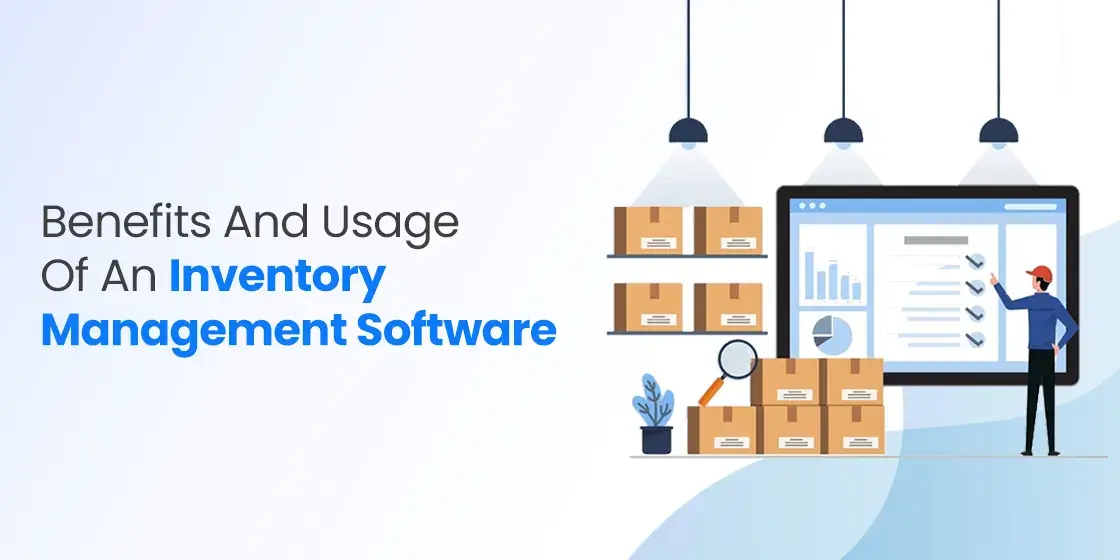Know About the Development and Usage of Inventory Management Softwares Below
Managing a big inventory often becomes a difficult task for many organizations. They usually fail in this process due to the continuous piling up of information. To manage this mess, it is best recommended to use a quality inventory management software. These systems are quite advanced, as they allow you to keep a track of everything with perfection. To develop these systems, you need to take custom software development services from professional agencies. They are well experienced in crafting such products, rightly as per the given requirements.
Inventory management software offer different types of benefits to the supply chain companies. They provide ease in handling different day to day jobs, such as tracking shipments, manage company inventories and more others efficiently. That is what makes them an essential internal product for many companies. They help administrators to simplify various tasks, so that they can focus more on the other jobs by getting reduced workload.
If you also want to know how to develop an inventory management system professionally, read this blog in detail. It is precisely written to help beginners get started in this field of development. Let us start from the basics below understanding what is an inventory management software and how does it work for supply chain companies.
What is Inventory Management Software?

Inventory management software is a specialized type of software designed to streamline and optimize the process of tracking and managing a company’s inventory. Its primary purpose is to provide businesses with a centralized platform for monitoring stock levels, tracking product movements, and managing reorder points. This software plays a crucial role in enhancing efficiency, reducing operational costs, and ensuring accurate inventory data for businesses of all sizes.
Inventory management system typically includes features for inventory tracking, allowing businesses to monitor stock levels in real-time. It provides a comprehensive overview of available products, allowing organizations to avoid stock outs or overstock situations. Using these softwares, administrators can get timely information about the status of products available in the current inventory.
Just like restaurant app development, these software solutions often integrate with other business systems, such as point-of-sale (POS) systems, e-commerce platforms, and order management systems. This integration facilitates seamless communication between different departments, enabling real-time updates on sales, purchases, and stock movements. This interconnectivity helps businesses make informed decisions about restocking, purchasing, and order fulfillment, ultimately improving overall operational efficiency.
Partner with our software development specialists to pioneer custom solutions that drive your business forward.
Request Your Solution
Types of Inventory Management Software
Understanding the different types of inventory management software available in the market is quite important before making any development or purchasing decisions. Each type serves specific business requirements and offers distinct advantages depending on your operational needs and organizational structure.
Cloud-Based Inventory Management Systems
Cloud-based solutions have become increasingly popular among modern businesses due to their accessibility and scalability features. These systems allow you to access your inventory data from anywhere with an internet connection, making them ideal for businesses with multiple locations or remote teams. They offer automatic updates, reduced IT maintenance costs, and enhanced collaboration capabilities that streamline operations significantly.
On-Premise Inventory Management Solutions
On-premise systems provide complete control over your data and infrastructure, making them suitable for organizations with strict security requirements or specific compliance needs. These solutions require dedicated hardware and IT support but offer enhanced customization options and faster processing speeds for large-scale operations.
Industry-Specific Inventory Systems
Different industries have unique inventory management requirements that generic solutions often fail to address properly. Retail inventory systems focus on point-of-sale integration and customer demand forecasting, while manufacturing systems emphasize production planning and raw material tracking. Healthcare inventory management requires strict compliance features and expiration date monitoring capabilities.
Integrated vs. Standalone Systems
Integrated inventory management systems work seamlessly with your existing business applications such as CRM, accounting software, and e-commerce platforms. Standalone systems, on the other hand, operate independently and may require manual data synchronization with other business tools. The choice depends on your current technology infrastructure and future expansion plans.
How to Develop an Inventory Management Software?

To develop a quality inventory management system, you need to remember some important points. Basically, there should be a plan to develop these softwares as they are quite technical and complex. A lot of times, beginners do not pay attention to these basics, which is why they face difficulties in developing a fully functional product.
If you also don’t know which type of practices should be used to develop an inventory software, take a look at the points defined below.
Start with Market Evaluation
First of all, you will need to evaluate the market completely to know about the latest trends. This is an important step that should be taken keeping all the core project objectives in mind. By conducting a comprehensive market research, you get to know about the types of inventory softwares being built in the industry. This will clear some of your concepts, allowing you to decide the theme and features of the application effectively.
The evaluation phase generally takes a bit of time, as you delve into different market practices during this phase. It is best recommended to give your complete focus while working in this stage, because extensive research and understanding is required in it. Once you will complete the research properly, you will get a clear view about the requirements of the project, and how it should be done systematically.
Select a Development Methodology
Selecting the appropriate development methodology for inventory management software is a crucial decision that can significantly impact the success of the project. The first step is to thoroughly assess the project requirements and characteristics. If the requirements are well-defined and unlikely to change frequently, a traditional waterfall methodology may be suitable, or you can use hybrid mobile app development model as well.
Additionally, consider the organizational culture and the team’s familiarity with different methodologies. If the team is experienced with a specific approach and has successfully used it in the past, it may be advantageous to stick with what works. On the other hand, if there is a need for a more collaborative and adaptive approach, the team may need to invest in training and transition to a different methodology.
Pick Tools and Technologies
By selecting the right tools and technologies for inventory management system, you can directly influences the efficiency, scalability, and long-term viability of the system. The first step is to conduct a thorough analysis of the project requirements and objectives. Understand the specific functionalities the inventory management system needs to support, such as real-time tracking, reporting, and integration capabilities.
Integration capabilities are also crucial in inventory management software. Ensure that the selected tools and technologies support seamless integration with other existing systems or potential future enhancements. Additionally, consider the scalability and performance requirements of the software. Opt for technologies that can handle the expected volume of data and transactions efficiently. Lastly, factor in the expertise and familiarity of the development team with the chosen tools and technologies to ensure a smoother development process.
Start Project Development
Now that you have selected all the tools required for the development of inventory management software, its time to start the development process. This is certainly an important stage in which you will need to work with a complete focus. It is best advised to first build a documented plan before starting any development process. It helps you to work under precised guidelines, ensuring that all your tasks always stays within the core development paradigm.
Working as an outsource development team on this project software, it is best recommended to allocate tasks to different skilled resources. This is a method that helps to divide tasks equally, making sure to manage workload of every resource properly. You can also use different tasks management portals in this phase to smoothly align every task. It includes different popular market names such as Jira, Slack, Trello, Assembla and more others.
Test and Debug the Application
Testing and debugging are integral components of ensuring the reliability and functionality of inventory management system. The testing process should encompass various levels, including unit testing, integration testing, system testing, and user acceptance testing. Unit testing involves evaluating individual components or functions to ensure they perform as expected. Integration testing focuses on validating the interaction between different modules or systems within the inventory management system.
Debugging involves identifying and fixing issues within the inventory management system. Developers can utilize debugging tools integrated into their development environment or third-party debugging tools to trace and analyze code execution. It’s crucial to establish a systematic approach to debugging, starting with reproducing the issue, isolating the problematic code or module, and then applying fixes or enhancements.
Key Features of an Inventory Management Application

Just like free POS software, there are different types of features present in an inventory management application. It is quite important to know about them before starting the development process. Being a beginner, if you don’t know much about them, take a look at the points defined below.
Centralized Management
The centralized management feature in inventory management software serves as a cornerstone for efficient and streamlined control over inventory-related processes. This capability involves consolidating and overseeing all inventory operations from a centralized platform, providing a comprehensive view of stock levels, movement, and other relevant information.
Centralized management allows businesses to monitor and manage inventory activities across multiple locations or warehouses from a single point of control. This ensures uniformity in data management, reducing the likelihood of discrepancies and inaccuracies that may arise when managing inventory across disparate systems.
Inventory Forecasting
Many companies often remain concerned about their depleting products stock. The implementation of an inventory management system alleviates this concern by providing a detailed insight into the stock status of each product. This system enables businesses to precisely identify which products have depleted stock levels and which ones are abundantly available.
This proactive approach assists in resource management, allowing business owners to allocate resources judiciously and avoid potential disruptions in product availability. Consequently, by leveraging the insights provided by the inventory management system, businesses can make informed decisions when it comes to purchasing and replenishing their inventory timely.
Continuous Inventory Backup
Irrespective of the nature of your business, ensuring the meticulous backup and robust security of your inventory stands as a pivotal element for the seamless functioning of inventory management. The inventory management system is equipped with robust security layers that not only mitigate the risk of unauthorized access but also render hacking attempts virtually impossible.
In the event of an unlikely scenario where the inventory management system faces a security breach, the system’s comprehensive backup mechanisms come into play. The software diligently maintains backups of critical inventory data, enabling business operators to swiftly recover and access the information needed for continued operations.
Business Operations Reporting
An inventory management system stands out as an invaluable asset primarily due to its robust reporting capabilities, offering detailed insights into various facets of business activities. Managing an inventory-intensive business requires those in leadership roles to stay abreast of a multitude of activities, ranging from tracking the location of delivery drivers to monitoring the real-time status of products.
The comprehensive reporting features within an inventory management system serve as a dynamic toolset that empowers decision-makers with the data needed to optimize operational efficiency and strategic planning.
Key Benefits of Using an Inventory Management Software

Inventory management system brings plenty of benefits for the supply chain managers. It not only eases their work, but also helps to save plenty of their time in managing and tracking the inventory of different products. Here are some of the core benefits of integrating this advanced software in your business operations.
Effortless Inventory Monitoring
When integrated with your ERP system, inventory management system significantly enhances control over your inventory by providing real-time tracking capabilities. It offers insights into the precise location of products and their movement throughout the system. This integration proves instrumental in mitigating human errors that are inherent in manual spreadsheet-based processes.
Accurate Stock Information
Inventory management reports provide a comprehensive overview of the current stock levels within the warehouse. By having access to this information, you can proactively assess the available stock when an order is received, facilitating informed decision-making regarding the quantity you already possess and the additional stock that needs to be arranged.
Minimizes Business Cost
Inventory management software contributes significantly to reducing the operational costs of a business through several key mechanisms. It enhances efficiency by automating various manual tasks such as order processing, stock tracking, and reordering. This automation minimizes the need for extensive labor hours, reducing labor costs and the potential for human errors.
Improves Supply Chain Operation
Discussing supply chain operations inherently involves confronting unforeseen challenges. Employing the appropriate inventory management system empowers retailers to craft a robust strategy for diversifying their supply chain. By leveraging the data generated from monitoring inventory stocks, businesses can mitigate the risk of prolonged waiting times in the event of supplier delays.
Streamline Inventory Management
The profound evolution of inventories is most evident in the myriad advantages offered by automated inventory management systems. The integration of automation or artificial intelligence into inventory management not only eradicates the potential for human error but also results in substantial time savings by automating repetitive tasks, sparing businesses hundreds of hours that would otherwise be spent on manual efforts.
Integration Capabilities and Third-Party Connections
Modern inventory management systems achieve their full potential through seamless integration with various business applications and third-party services. These integration capabilities transform standalone inventory tracking into a comprehensive business management ecosystem that enhances operational efficiency across all departments.
ERP System Integration
Enterprise Resource Planning (ERP) integration creates a unified data environment where inventory information flows seamlessly between different business modules. This integration ensures that financial data, production schedules, and inventory levels remain synchronized in real-time, eliminating data discrepancies and improving decision-making accuracy. Working with professional development services ensures proper ERP integration that maintains data integrity across all connected systems.
E-commerce Platform Connectivity
Connecting your inventory management system with e-commerce platforms like Shopify, WooCommerce, or Magento enables automatic stock level updates and prevents overselling situations. This integration allows real-time inventory synchronization across multiple sales channels, ensuring consistent product availability information for your customers and reducing manual inventory updates significantly.
Accounting Software Synchronization
Integration with accounting software such as QuickBooks, SAP, or Xero streamlines financial reporting and cost management processes. This connection automatically updates inventory valuations, tracks cost of goods sold, and generates accurate financial reports without manual data entry. The synchronization helps maintain precise financial records while reducing administrative workload effectively.
Point-of-Sale (POS) System Integration
POS integration creates a direct connection between sales transactions and inventory updates, ensuring immediate stock level adjustments with each sale. This real-time updating capability prevents stock discrepancies and provides accurate inventory information for both staff and customers. The integration also facilitates better sales analytics and customer behavior insights.
API Capabilities and Custom Integrations
Robust API (Application Programming Interface) capabilities allow your inventory management system to connect with virtually any business application or service. These APIs enable custom integrations with specialized tools, legacy systems, or industry-specific applications that your business may require. Having flexible API options ensures that your inventory system can adapt to future business needs and technological changes.
Supply Chain Partner Connections
Advanced inventory management systems offer integration capabilities with supplier systems, logistics providers, and distribution partners. These connections enable automatic purchase order generation, shipment tracking, and supplier performance monitoring. Such integrations create a transparent supply chain network that improves collaboration and reduces operational delays significantly.
What Makes StruqtIO a Perfect Choice for Inventory Management Software Development?
StruqtIO is one of the leading web development companies in UAE having years of market experience. We can help you to craft cutting-edge inventory management systems, rightly as per the needed demands. Built with latest technologies, our inventory management solutions help you to handle everything in the store perfectly without indulging in any manual effort.
Working with our dedicated software developers in UAE, you are fully ensured to get quality app development services on time. We simplify development by using latest methodologies that help to create quality business solutions as per the latest industry standards.
Frequently Asked Questions
| What is an inventory management software? An inventory management system refers to a complete system where you can manage every product inventory without any hassle. These systems are quite advanced, as they allow you to do several jobs like tracking shipments, forecasting inventory and more others easily. |
| What are the important tips for the development of inventory management software? To develop an inventory management software, you need to keep in mind some important points. It includes proper market research, right tools selection, documented development plan and more others. |
| Define some of the key benefits of using an inventory management software? An inventory management software allows you to perform several product handling operations effortlessly. It offers stunning advantages like fast shipment tracking, improved supply chain, reduced operational cost and more others. |
Final Words
That takes us to the end of this blog in which we have discussed about inventory management software in detail. It is a very handy product that allows you to manage tons of inventories effortlessly. The good thing about these softwares is that they are very easy to use, requiring no technical knowledge at all. This is the reason why big businesses like to integrate them within their systems, as they know how beneficial these products can become for them.
If you are also looking for a company that could help you to build quality inventory management systems, get in touch with us today. We will help you to develop cutting-edge software products rightly as per the business requirements.

Empower your digital journey with StruqtIO - Your dedicated partner for cutting-edge custom software development, innovation, and digital transformative solutions. Harness the power of technology to elevate your business and redefine your digital landscape today.


